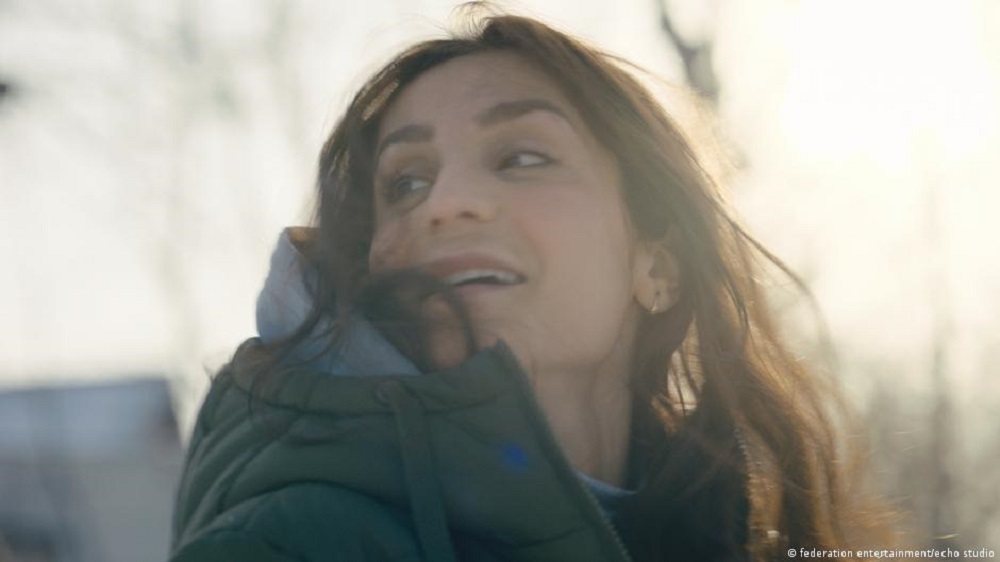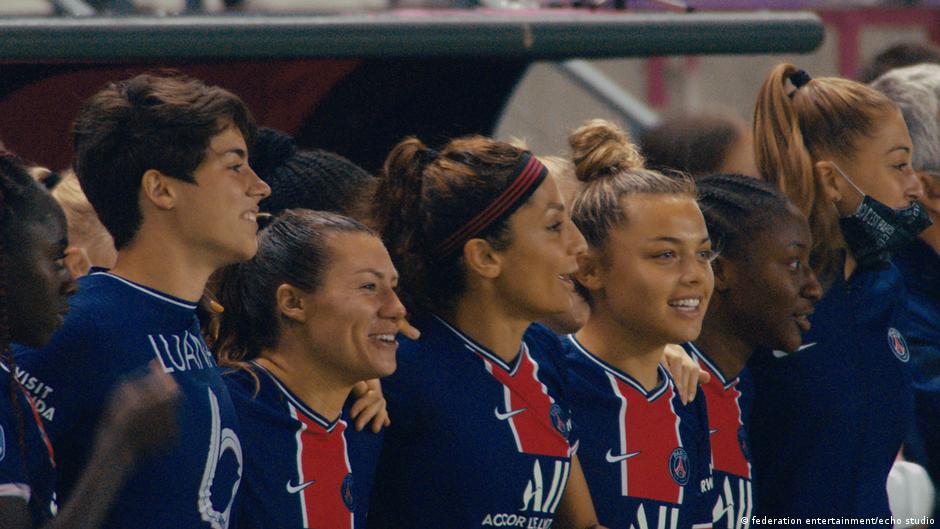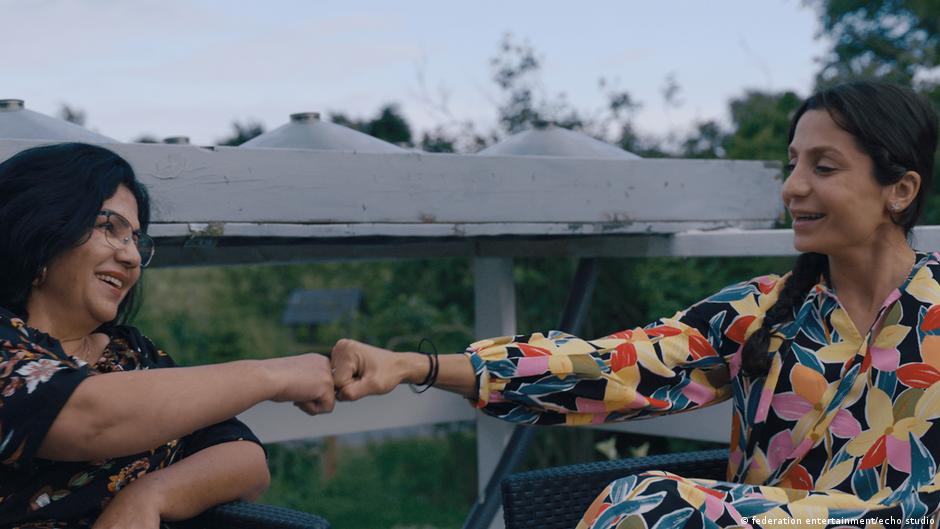From child refugee to professional footballer

Nadia Nadim was 8 years old when her father was murdered by the Taliban – executed with a shot to the back of the head. At least that is what her mother Hamida heard, Nadia Nadim tells us at the beginning of the documentary film "Nadia", for which she let the camera accompany her for one and a half years. Calm and collected, she looks back on her own history in this first scene, noting more than she tells. The camera is close to her, showing her in a sterile room, which the last rays of daylight bathe in a strange bluish light.
Then a hard cut: driving violin music accompanies scenes of Nadia Nadim playing for the French football club Paris Saint-Germain (PSG), repeatedly interrupted with often disturbing archive footage from Afghanistan of crying children, beaten women and destroyed cities. Within just five minutes, the broad lines of this haunting documentary are drawn: it's about war, flight, and football.

A versatile protagonist
"I just tried to be as honest as possible with Nadia," says director Anissa Bonnefont. "Nadia combines all these complex issues in one person." When Anissa Bonnefont mets her young protagonist for the first time in 2019, the women hit it off right away. This closeness is felt throughout the documentary. Nadia Nadim lets Anissa Bonnefont and, with her, the viewers get remarkably close to herself and her story. Nadia retains her dignity at all times, the camera's gaze is never voyeuristic.
We get to know her family and, above all, Nadia's courageous mother Hamida during the 85-minute documentary. Following the death of her husband, Hamida was left on her own with five daughters. As a single woman, she had no prospects during the first Taliban rule from 1996 to 2001. Afghanistan experienced a reign of terror during this time. Women had to wear the all-enveloping, were not allowed to leave the house without their husbands, nor pursue a job or inheritance. Miraculously, the family managed to escape in 2000. First to Pakistan and from there to Europe.
Via detours, the six women and girls finally reached Denmark. There Nadia discovered football for herself. A stroke of luck – Nadia loved the sport and her talent did not remain undiscovered for long. As a young woman, she played for the Danish national team and Manchester City, among others. While filming, she is under contract to Paris Saint-Germain and becomes French champion with her team in 2021. In addition to her football career, she finds time to complete a medical degree.

Will they ever return to Afghanistan?
And yet Nadia also has "this side of a sad clown", says director Bonnefont. "She has a real scar, a real tear." She has never come to terms with her father's death. Her greatest wish is to return to Afghanistan to retrieve his war medals, which the former Afghan general guarded like a treasure. To hide them from the Taliban, Nadia's mother asked her relatives who remained in Afghanistan to bury them.
This story adds another dimension to the film: just when the Taliban are gaining power again with the withdrawal of troops by the USA and other NATO countries, Nadia plans to travel to the country of her birth. Whether she succeeds is not revealed at this point.
"We started working on this project in September 2019, and by the time the film was shown in France in October 2021, the situation in Afghanistan had undergone a dramatic deterioration," film producer Myriam Weil looks back. "What we had perceived as archive footage when we started editing – namely women being whipped – had gone from being archive footage to actual footage."
Nadia's conversations with, among others, a surgeon stationed in Afghanistan, Najeehbullah Bina, and David Martinon, the French ambassador in Kabul, address the dramatic situation in the country. The film manages, however, to avoid becoming political or sliding into moralistic platitudes. Nevertheless, both the protagonist and the makers strive for more with their film.
A film with a message
The production companies "federation entertainment" and "eco studio", among others, organised special screenings for the film to raise funds for refugees. One of these campaigns raised approximately 20,000 euros for the "Singa" association, which brings refugees together with people who want to host them in their own homes.
"We want to change the view of refugees," says Myriam Weil. This is especially important at the present time, when more people are being forced to flee because of war, crises and global warming.
Nadia Nadim was already very socially engaged before the documentary film: among other things, she is a special representative for UNESCO and is involved with both "Doctors Without Borders" and the NGO "From Street to School", which promotes girls' education. Last year, she moved from PSG to Racing Louisville, USA. She wants to pursue her professional career there for two more years. After that, she hopes to set up as a doctor, specialising in reconstructive surgery.
"My life has been so crazy already. I've already experienced so much," Nadia tells us at the end of the film. "It feels like seven or eight lifetimes and I'm only 33!" She says she hopes her life will remain as intense, just maybe with a little break here and there.
Finally, we meet Nadia again in the sterile room we saw at the beginning. The sun has now set completely, you only see dimly. What remains etched on the memory long afterwards is her infectious laughter.
© Deutsche Welle 2022